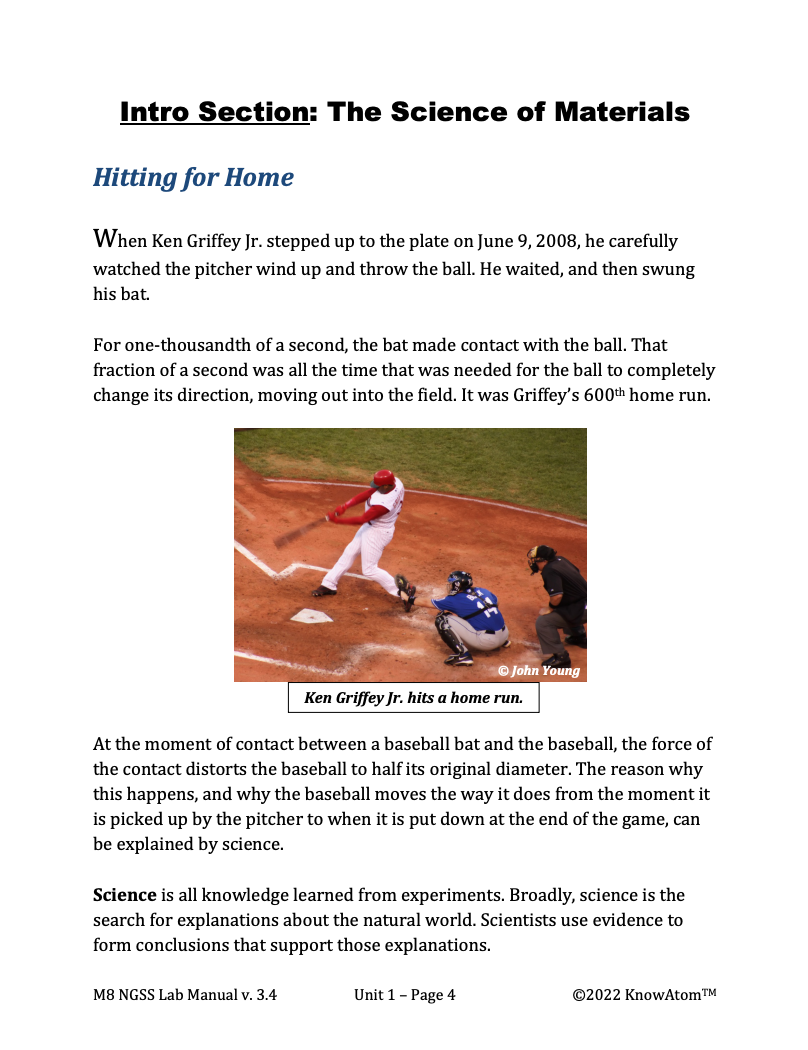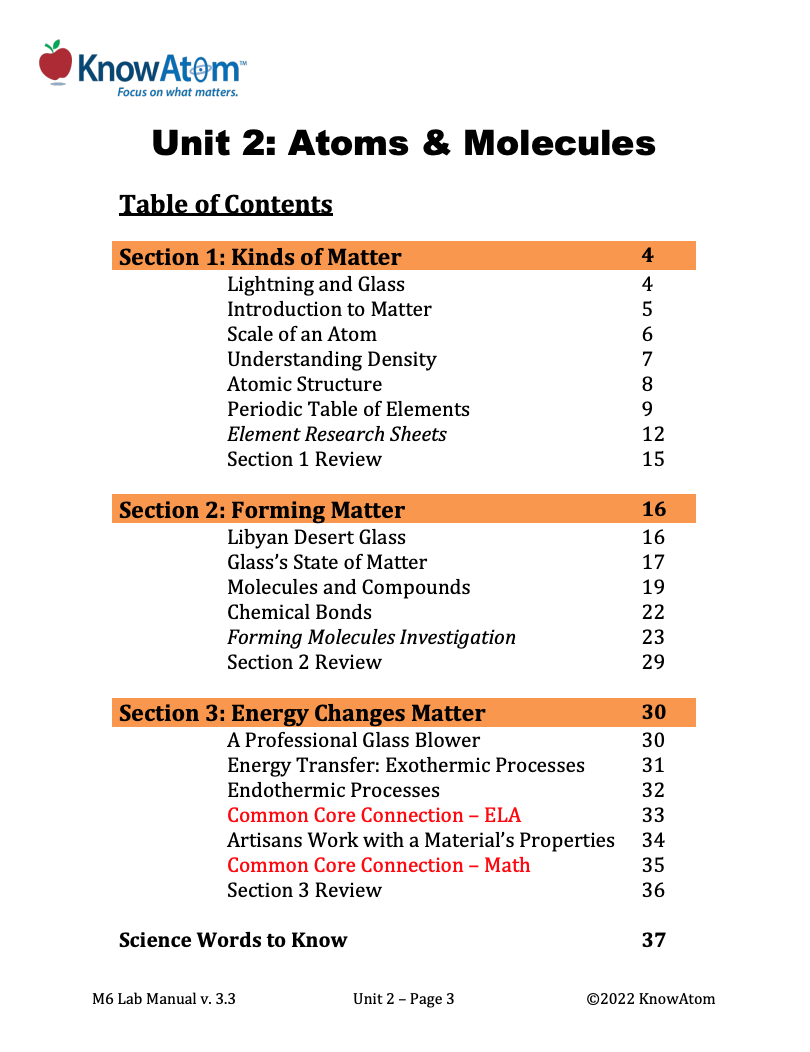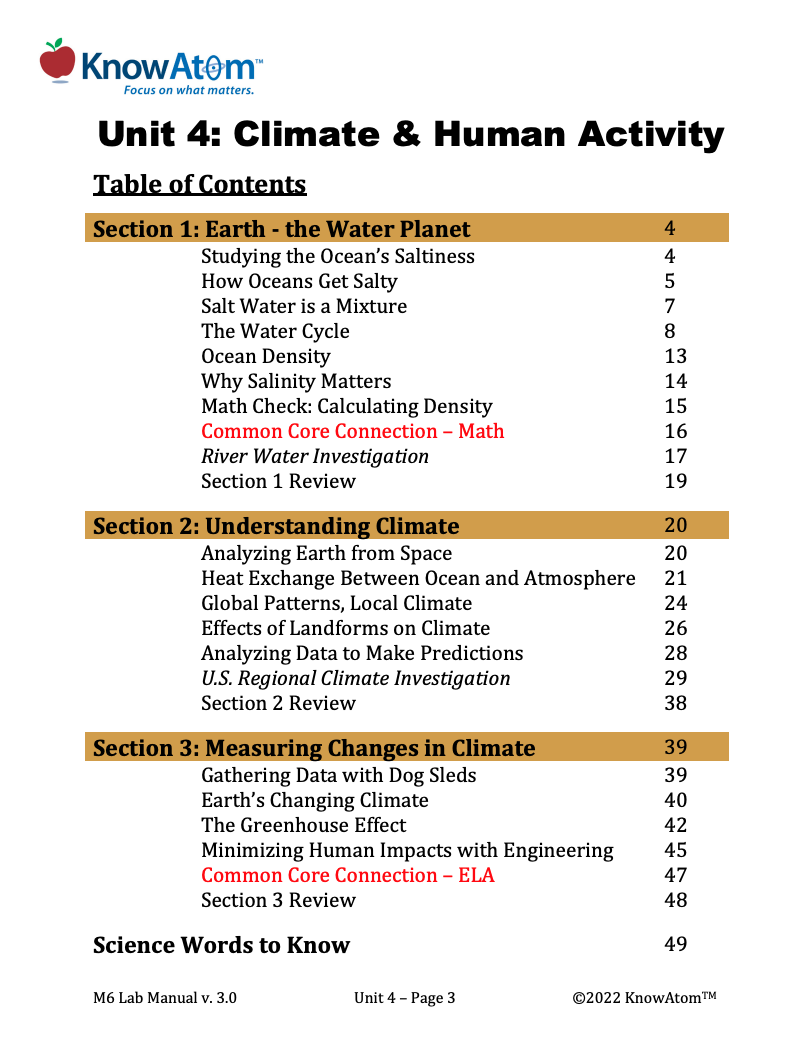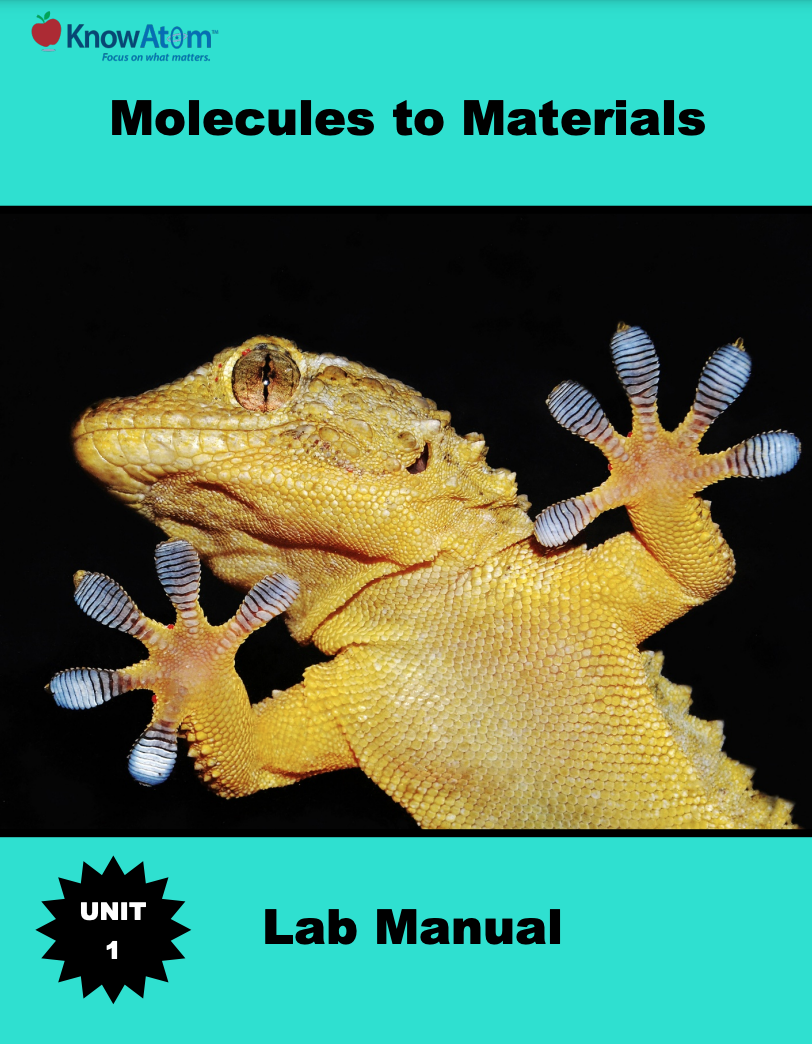.png)
In this unit, students explore several phenomena that relate to cooking. In this lesson, students evaluate chemical reactions, and use that knowledge to engineer a prototype that transfers energy by chemical processes. This page showcases key components of this lesson.

In this unit, students use the phenomenon of why certain materials (such as the materials that make up a baseball) are useful for a particular function to explore the relationship between matter and energy phenomena. In this lesson students manipulate the properties of a polymer bouncy ball by changing the amounts of reactants in a chemical reaction. This page highlights parts of this lesson.

In this unit, students explore the science phenomena of interactions between energy and matter, analyzing how matter can only change when enough energy is present. In this lesson, they investigate the structure of molecules, relating this structure to the matter’s properties. This page is a high-level extract of this lesson.

In this unit, students investigate the relationship between the water cycle, ocean salinity, weather, and climate. In this lesson, students explore ocean salinity and analyze how ocean density is related to its molecular structure. This page highlights key components of this lesson.

In this unit, students use the phenomenon of why certain materials (such as the materials that make up a baseball) are useful for a particular function to explore the relationship between matter and energy phenomena. In this lesson students manipulate the properties of a polymer bouncy ball by changing the amounts of reactants in a chemical reaction. This page highlights key parts of this lesson.
Standards citation: NGSS Lead States. 2013. Next Generation Science Standards: For States, By States. Washington, DC: The National Academies Press. Neither WestEd nor the lead states and partners that developed the Next Generation Science Standards were involved in the production of this product, and do not endorse it.
